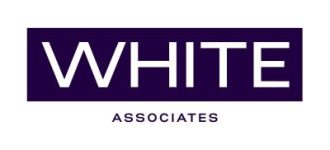In this article, we explain the function of a Complying Instrument and compare the various options available.
Want to refer to this information later?
The recent amendments to the Construction Contracts Act (CCA) have cast a spotlight on the retention regime. The traditional approach of holding retention monies is just one of many ways in which parties can secure performance and ensure there is some level of security in place to assist with the remediation of defects.
What are Complying Instruments?
“Complying Instruments” are a lesser-known mechanism under the CCA and provide an alternative to holding retention money. Whilst not a new concept [1], complying instruments have, until now, rarely been utilised in the New Zealand construction industry. However, there is a significant increase in administration and management of retentions for retention holders (Parties A) under the amended CCA. This, along with changing market and economic conditions, means Complying Instruments are becoming an attractive alternative.
Bonds, guarantees or specific insurance are all examples of Complying Instruments that may be procured by Party A from a registered bank or licensed insurer to secure retention money. These instruments require the issuer to pay money to Party B should Party A default in paying retention monies that have become due under the relevant contract.
What are the options, and how do they work?
This is White Associates’ third instalment on the subject of retentions, in which we briefly summarise the various Complying Instruments, the perceived advantages and disadvantages of each to Party A, and some key points regarding compliance.
Am I Party A or Party B?
If you are a:
- Principal
- Developer
- Head Contractor (holding retentions for a Subcontractor)
You are Party A.
If you are a:
- Head Contractor (having retentions held from you by a Principal or Developer)
- Subcontractor
You are Party B.
Requirements of Complying Instruments
It is important to note that all Complying Instruments must meet the requirements set out in the CCA.
The CCA defines “Complying Instruments” in section 18FB:
(2) The issuer of the instrument must be:
- A licensed insurer; or
- A registered bank; or
- Any other person, who is not an associate of party A, prescribed or within a class prescribed in regulations.
(3) The instrument must:
- Be issued in favour of party B or endorsed with party B’s interest; and
- Require the issuer to pay the retention money to party B if party A fails to pay that money on the date on which it is payable under the construction contract; and
- Enable party B to enforce that promise against the issuer; and
- Comply with any requirements that are prescribed in regulations and that apply in respect of the instrument.
(4) The premium or other money that is payable, or that may become payable, to the issuer for the instrument must have been fully paid by party A and all terms and conditions must have been satisfied so that the instrument is, and remains, in effect.
An instrument may be in different formats (such as insurances, bonds, or guarantees) as long as it fulfils the requirements described in sections 18FB (2–4).
Party A is furthermore required to maintain and disclose records of all Complying Instruments held in respect of any Party B. The reports provided by Party A to Party B must include the following details in respect of each Complying Instrument:
- The name of the entity that issued the Complying Instrument; and
- The policy number (or similar); and
- The amount secured under the particular Complying Instrument.
Costs incurred in procuring and maintaining a Compliant Instrument cannot be recovered from Party B.
Retention Account
Party A maintains a bank account for the specific purpose of holding contract retentions.
A retention account must be opened, and the money kept, within New Zealand with a registered New Zealand bank. Retention money is automatically held “on trust” by Party A.
A retention amount (specified under the relevant construction contract, commonly 5–10% of the contract value) is deducted from each of Party B’s progress payment claims. The trust arises as soon as the amount becomes retention money and continues until certain contractual obligations have been fulfilled, defects have been fixed, and the money is paid to Party B. i.e., Practical or Final Completion is achieved.
Alternatively, the trust will come to an end when:
- Party A uses the money to remedy defects (to the extent permitted under the construction contract); or
- It otherwise ceases to be payable to Party B; or
- Party B relinquishes its rights in respect of the retention monies.
- Retention monies from multiple parties and multiple projects can be held within the same retention account.
- They can be utilised by all Parties A, regardless of their financial situation.
- Retention accounts are a relatively simple self-managed solution ensuring compliance with the Construction Contracts Act (Retention Money) regime.
- Party A has entitlement to any interest accrued on retention monies.
- Requires ongoing management and administration to ensure compliance with the CCA.
- Requires monthly reporting to all Parties B.
- May require adjustment to your progress payment schedule template to include a retention summary (as required under clause 18FD of the CCA (Retention Money) Amendment Act 2023).
- The cost of managing and administering the trust account rests with Party A, and Party A cannot charge or deduct any monies from Party B for doing so.
Retention Bond or Guarantee
- Complying Instrument.
- Performance bond.
- Bank bond / Bank guarantee.
- Surety bond / Surety guarantee.
* Not to be confused with a Bond in lieu of Retentions (Clause 12.3.3, NZS3910:2013).
A retention bond is a guarantee from a third party, typically a financial institution. If a company fails to deliver on its contractual obligations and does not return to fix defects, the bond provider will pay instead.
There are three parties to a bond:
- The Principal / Client / Head-Contractor (Party A) – known as the Bond Principal.
- The Contractor / Subcontractor (Party B) – also referred to as the Beneficiary.
- The Bond Provider – a bank or other institution, known as the Guarantor or Surety.
A bond operates much like a mortgage – i.e., it is a loan facility, which if drawn down, must be repaid in full plus any fees and/or interest. A retention bond is a type of performance bond which requires conditions to be satisfied before it can be either called upon or released (if not, then it is an on – demand bond). A bond normally applies to a single project only.
- As good as cash.
- Replaces traditional retentions but fulfils the same role / purpose.
- Demonstrates Party A’s financial stability.
- Once in place, requires no ongoing management or administration.
- Provides security for performance of Party A’s contractual obligations.
- Improves Party A’s cash flow.
- Eliminates trust obligations and related liability under the CCA for the Party A and its directors.
- Reduces likelihood of CCA breach(s).
- Can be drafted to suit individual parties’ requirements and/or projects
- May not be suitable for low value and/or small projects, i.e., Small alteration projects.
- Will not be an option for smaller companies and/or companies with fewer assets and borrowing capacity.
- Must be repaid in full if it is called upon by the Party B.
- May be difficult to obtain for Parties A where they are working on multiple concurrent projects, all requiring bonds.
- Specific contract drafting will be required to ensure the conditions of the Retention Instrument and Construction Contract are aligned (NZS contracts 3910, 3915 and 3916).
Retention Insurance Instrument
- Insurance policy.
An Insurance Retention Instrument is a financial guarantee from a third party, in the form of an insurance policy, that protects retentions (in respect of one or more Parties B) up to a designated maximum value.
This retention instrument operates like an insurance policy.
Party A deducts and holds retentions from Parties B. However, it is not necessary to hold retention money on trust as the Retention Instrument protects the full value of the retentions. This means Party A can use these funds as working capital.
The policy responds when Party A is unable to pay a relevant retention amount to Party B.
- Reduces retention management and administration.
- Reduces risk of CCA breach(s).
- Enhances cashflow for Party A up to the insured value.
- Is renewable annually.
- Can be dollar specific (i.e., a group of projects) or project specific. Can be used across multiple different projects, of any size and value, involving multiple Parties B.
- Avoids the scenario whereby third party retention information is intermingled with retention account information of Party B.
- Can be updated and revalued as retentions values change.
- Does not necessarily have to be repaid by Party A, if called upon.
- Subject to terms and conditions set by the insurer.
- Subject to verification of Party A’s financial status. This may not be an option for smaller companies and/or companies with fewer assets or turnover.
- Party A may need to operate a compliant trust account as a backup to manage retentions that exceed the policy’s maximum limit i.e., where there is a shortfall between the value of the Retention Instrument and actual retentions.
- Party A will still have some administration / management obligations. For example:
- Servicing premium payments.
- Provide the policy provider with a monthly retentions report (this report becomes the policy schedule).
- Provide each Party B with a monthly retentions report.
- Specific contract drafting will be required to ensure the conditions of the Retention Instrument and Construction Contract are aligned (NZS contracts 3910, 3915 and 3916).
Third Party Retention Account Holder
- Retention account.
- Trust account.
Party A can engage a third party to manage and administer a retention account on their behalf.
A third party takes responsibility for operating and maintaining the retention trust account on behalf of Party A. Those approved to take on this role are authorised by statute under clause 18E(3) of the Construction Contracts (Retention Money) Amendment Act 2023.
The account can be held by:
- An incorporated law firm.
- The Public Trust.
- A trustee company.
- A Chartered Accountant.
- A person holding a licence under the Auditor Regulation Act 2011, or other person authorised under that legislation.
- Management and compliance with the CCA retentions regime is outsourced, and Party A can focus on core business.
- Party A cannot misuse (or be tempted to misuse) retention monies.
- Retention monies from multiple parties and multiple projects can be held within the same retention account.
- Specialist management of retentions reduces risk of CCA breach(s).
- Can be utilised by all Parties A, regardless of their financial situation.
- Retentions are deducted from progress payment claims, and require ongoing administration, reporting and management.
- Party A pays a third party for management and administration of retentions.
- May not be suitable for shorter or low-value projects as the cost of administration may outweigh the benefits.
Further Guidance
If you require further guidance, please feel free to contact our Advisory division leads.

Justin Maritz
DirectorJustin has over 24 years' international experience and a proven record in achieving successful outcomes on challenging projects.

Jesse Conradie
Associate DirectorJesse has a powerful combination of Advisory expertise including contract law, engineer to contract, and dispute avoidance and resolution.
Further Resources
- For MBIE’s guidance document: Retention money guidance for the Construction Contracts Act 2002
- Read our other articles in the retention series:
For the relevant legislation:
- Construction Contracts (Retention Money) Amendment Act 2023
- Construction Contracts Act 2002
- Construction Contracts Regulations 2003
[1] Section 18FB – Complying Instruments – was inserted on 31 March 2017 by section 152 of the Regulatory Systems (Commercial Matters) Amendment Act 2017.
Disclaimer: the content of this article is general in nature and is not intended as a substitute for specific professional or legal advice on any matter and should not be relied upon for that purpose. It is current as at the date of publication only.
This article was contributed by Rebecca Ward, Jesse Conradie and Gemma Christall.

